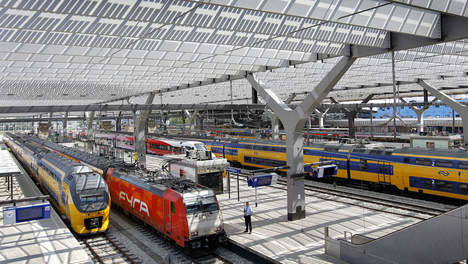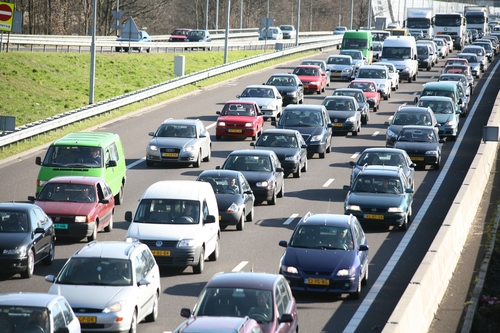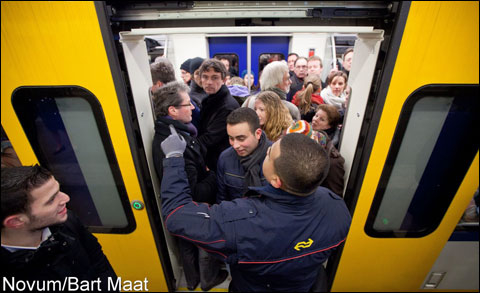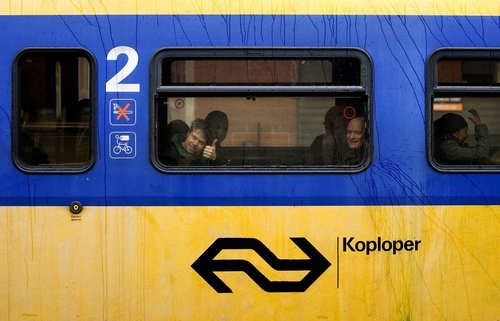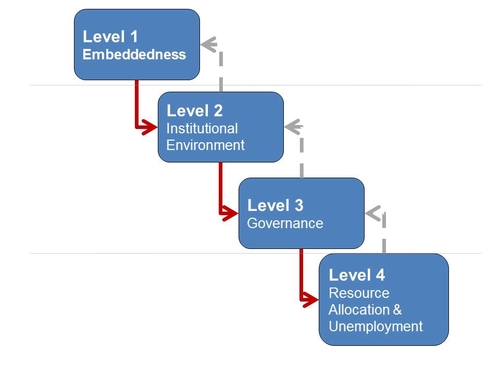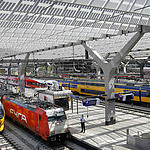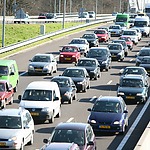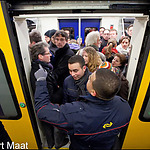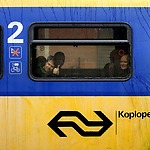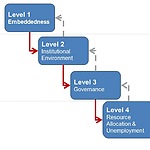Innovations often appear because the old design doesn’t fit well anymore in the current situation, mostly driven by market gain. Think of the IPhone, how long will it take before the IPhone 6S becomes an old-fashioned design and the customer wants a new one that can do more awesome stuff? Not so long, because customers’ preference nowadays shifts like Wall Streets’ stock market. However, innovations can also occur when societal issues need to be tackled, often driven by the government and lobbying groups. Now, let’s think: what are two main societal issues of massively driving vehicles? Growing congestion and environmental pollution, leading to large economic and ecological damage. Interesting! Because these societal issues can be tackled with innovations in one Dutch industry: public transport.
Figure 1. Congestion
Figure 2. Environmental pollution

Using public transport instead of the car lowers the average emission of carbon dioxide per passenger, because of more passengers per vehicle, and reduces the burden on the Dutch infrastructure, because of less vehicles needed. Making public transport more customer friendly should keep current passengers satisfied and should attract car drivers, thus resulting in less congestion and environmental pollution. Yet, making public transport more customer friendly needs to take the values and norms of passengers into account, resulting in requirements for design. Let’s do a value-sensitive-design-check on this sector.
In order to come up with policy, I want to focus on three key values: affordability, comfortability and trust/privacy. Public transport will attract potential passengers when the costs of use are lower than cars’ costs. Also more place to sit and a quiet environment in transport vehicles will result in more passengers. Wide accessibility of public transport (disable-friendly) and short waiting times will increase the number of customers too. Finally, making it easier to check in and out with the ‘OV-chipkaart’ (Dutch' national public transport pass) [1], taking the privacy of passengers into account, will lead to more people using public transport. How can we achieve this?
Now the most important values and norms are described, except from safety (let’s say this won’t be an issue), let’s have a look at how these norms can be achieved. Lower prices for public transport can almost only be achieved by subsidies from the government for public transport companies. Nowadays, you have to pay once €7,50 for the OV-chipkaart and, next to this, you have to upgrade this pass with at least €20 for using the train. With subsidies, taking the train will be affordable for everyone. More place to sit, a quiet environment, wide accessibility and shorter waiting times should be the result of a healthy competition in the transport industry, where companies, seeking for more customers, are improving customer friendliness continuously. However, Dutch’ public transport, especially railways, is filled with monopolies, markets with only one company offering the service. Gone is the innovativeness! Dutch’ train company, called the NS, now thinking ‘No one is going to kick me out’. So, government, liberalize and privatize the Dutch railways, in order to give a signal to the NS: no more waiting for and standing in trains!
Figure 3. How it's often now
Figure 4. How it's supposed to be
About the check-in methods, I want to refer to a frugal innovation I wrote a column about in week 4: M-PESA. We, as a rich developed country, could learn something from the poor Kenya, where people are paying with their cell phone for public transport. Why do we have to pay a €7,50 entrance? Innovate the check-in system, NS, develop alternative paying methods, like mobile paying and road-pricing, next to the OV-chipkaart that is sometimes struck by breakdowns. And when you do this, please guarantee customers’ privacy and do not track down travel patterns for your own gain, unless when customers agree.
Embedding values and norms more into public transport will attract car drivers to take the train, bus etcetera, resulting in less congestion and environmental pollution. The government should play an active role in achieving this, regulating public transport with laws that improve and guarantee passengers’ values while at the same time, stimulating competition. We do not count on the companies, government, we count on you!
Figure 5. Laws protect values, look!
Sources
